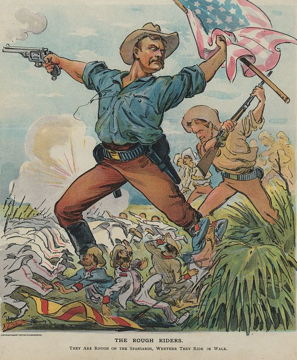

The Pack contains associated resources for the learning experience, typically in the form of articles and videos. There is a teacher Pack (with only teacher information) and a student Pack (which contains only student information). As a teacher, you can toggle between both to see everything.
Here are the teacher pack items for U.S. Expansionism and the Panama Canal:


Overview In this experience, students learn about the connection between Theodore Roosevelt and the Teddy bear. Then they examine Roosevelt’s “Big Stick” foreign policy. Next they learn about the role of the United States in the building of the Panama Canal, and they analyze political cartoons about this feat. Finally they summarize an excerpt by Alfred Thayer Mahan and evaluate how it predicted the development of the United States into a world power. Students will collaborate in small groups for scene 3 and scene 4. Objective
One of the heroes to emerge from the Spanish-American War was Theodore “Teddy” Roosevelt. In this lesson, you will learn about his foreign policy.
Objective

Theodore Roosevelt left his job as Assistant Secretary of the Navy to fight in Cuba during the Spanish-American War. He organized a cavalry regiment nicknamed the Rough Riders. They led a successful campaign in the Battle of San Juan Hill, which became a legend thanks to a silent movie made in 1927 and to Roosevelt’s own writings.
Following the war, Roosevelt was elected governor of New York. Shortly afterward, President William McKinley chose Roosevelt to fill the position of Vice President for the 1900 election. Several months into the term, McKinley was assassinated and Theodore Roosevelt became the twenty-sixth president of the United States. He was later re-elected for a second term.
As you can see, Roosevelt had many different titles throughout his career. But he made another contribution to American culture that may surprise you. Look at the following cartoon.
Drawing the Line in Mississippi
Use your imagination and try to explain the connection between Theodore Roosevelt and the Teddy bear.
Interested students can read a history of the Teddy bear available in the Student Pack.
